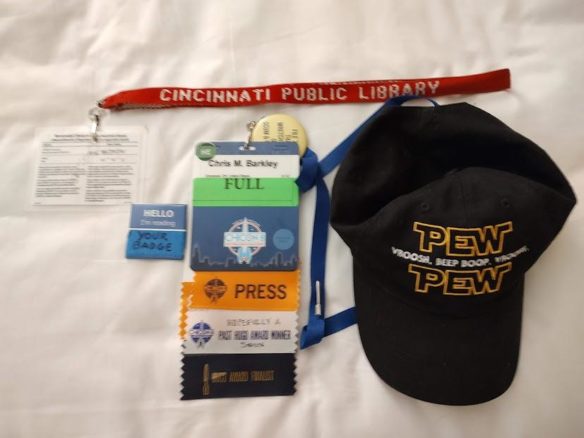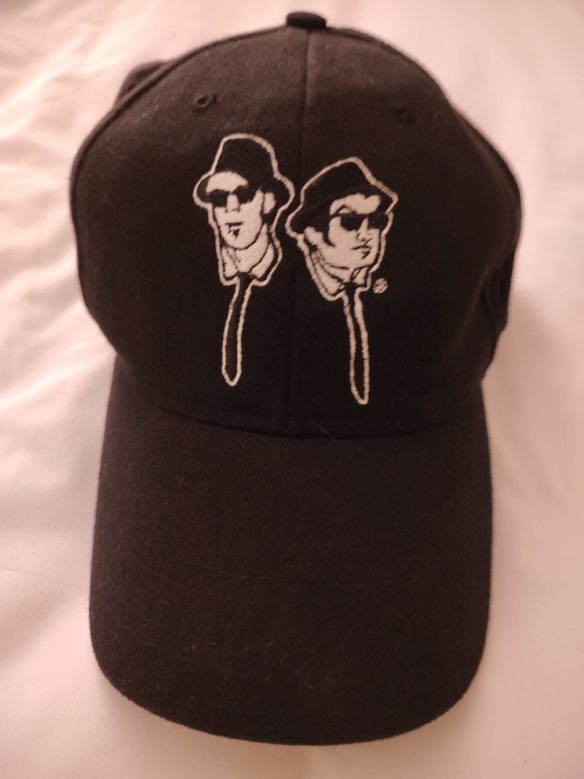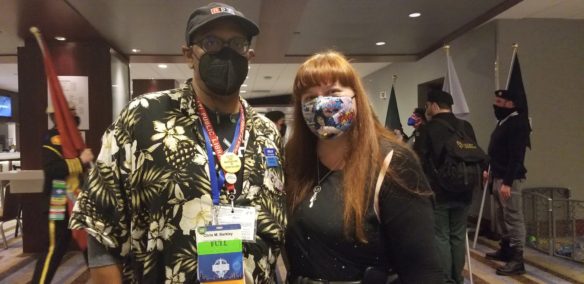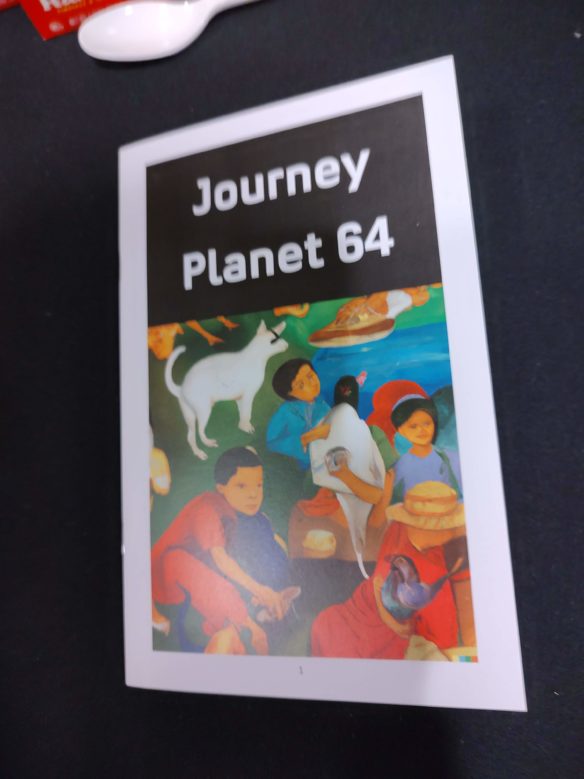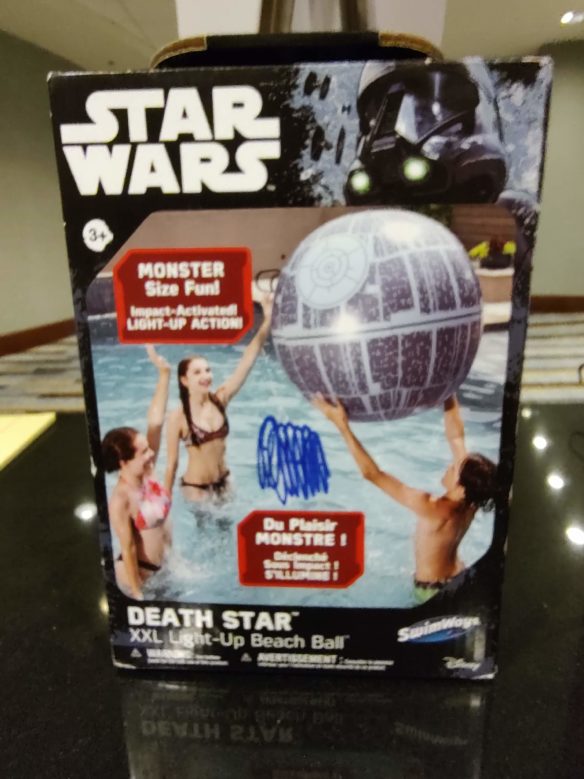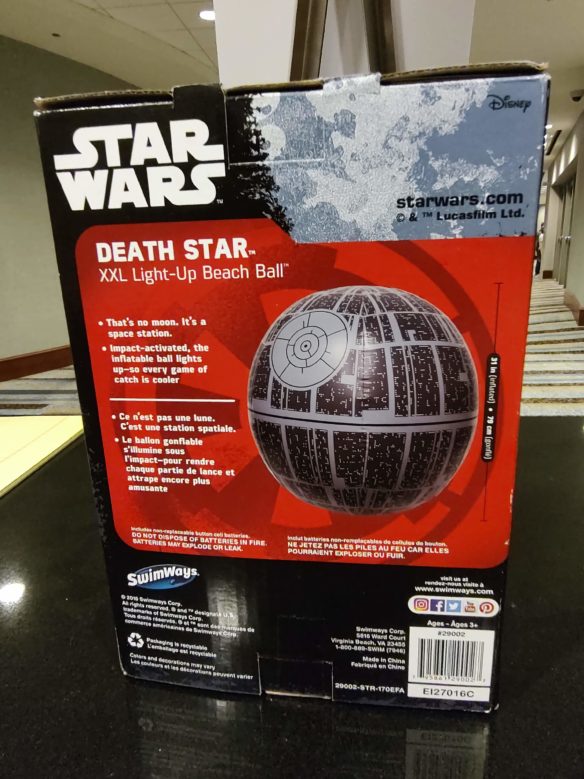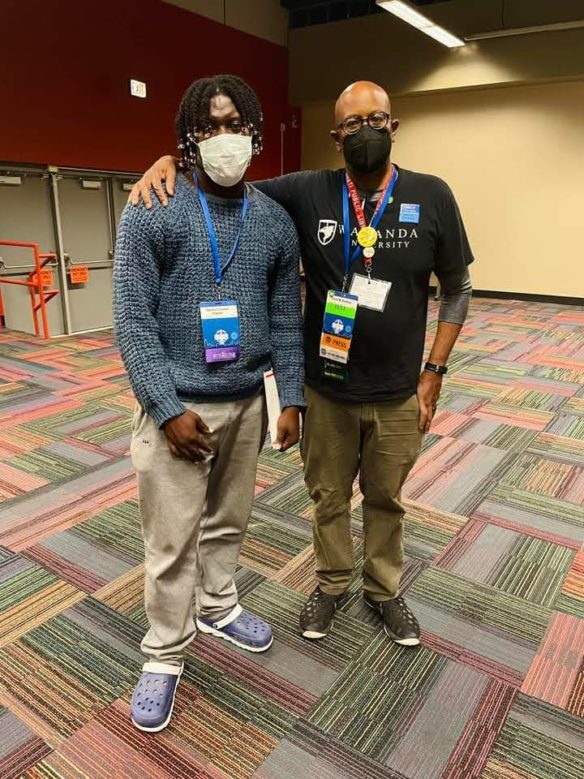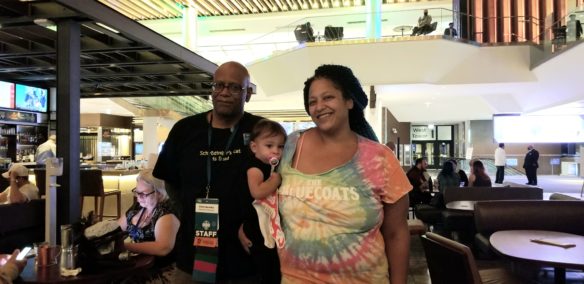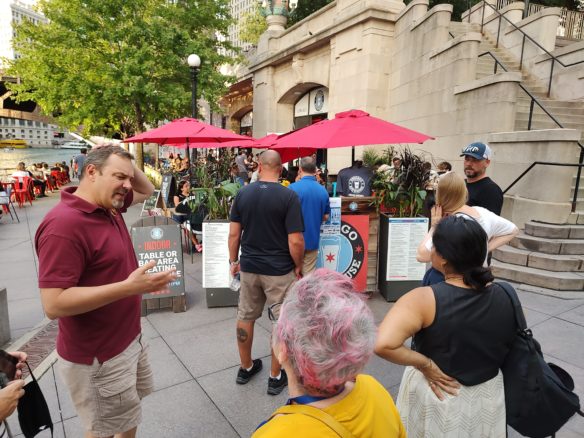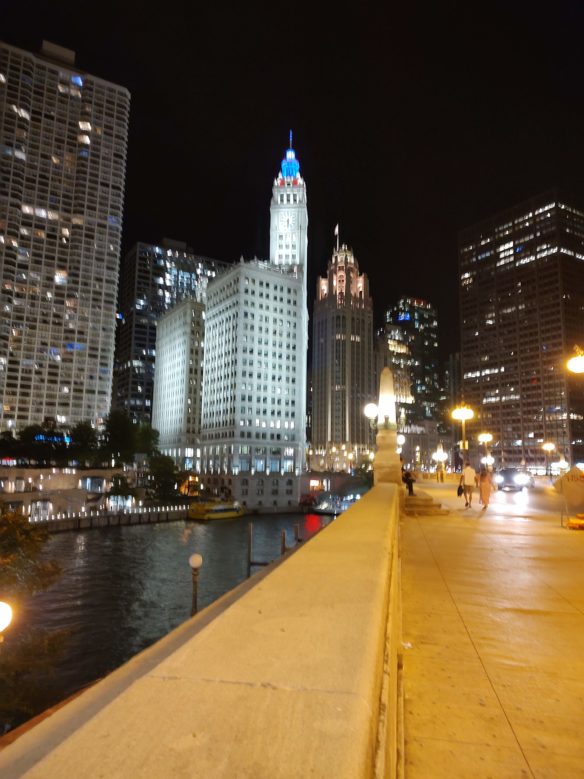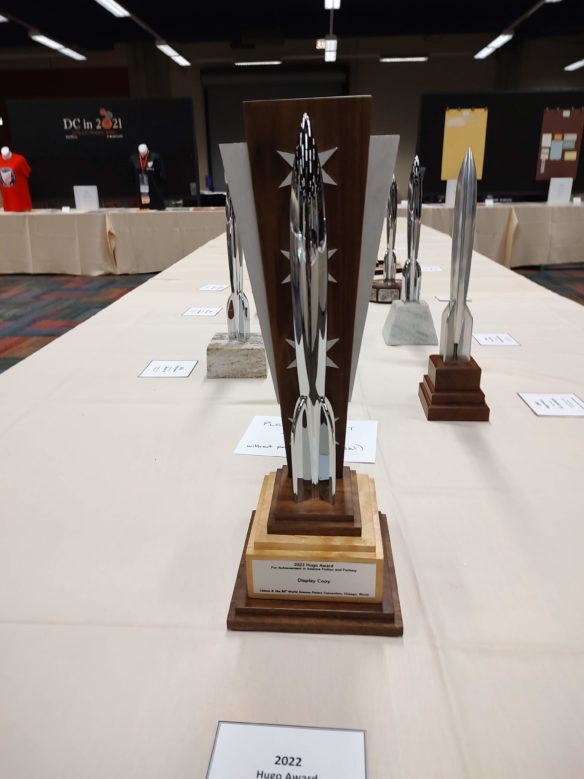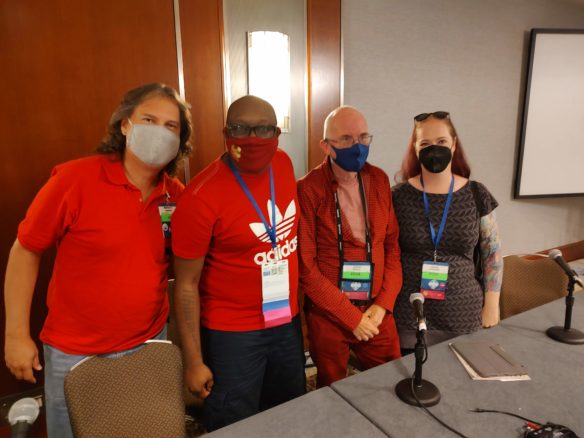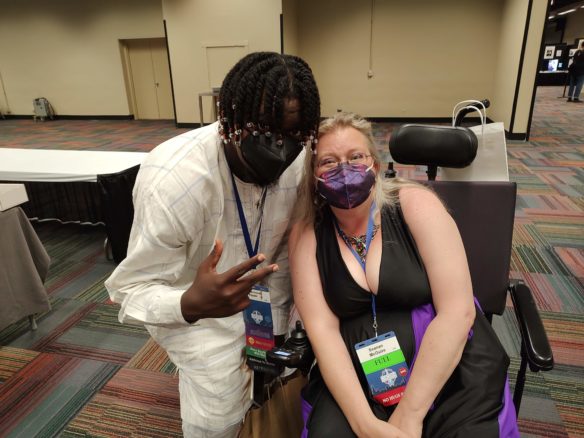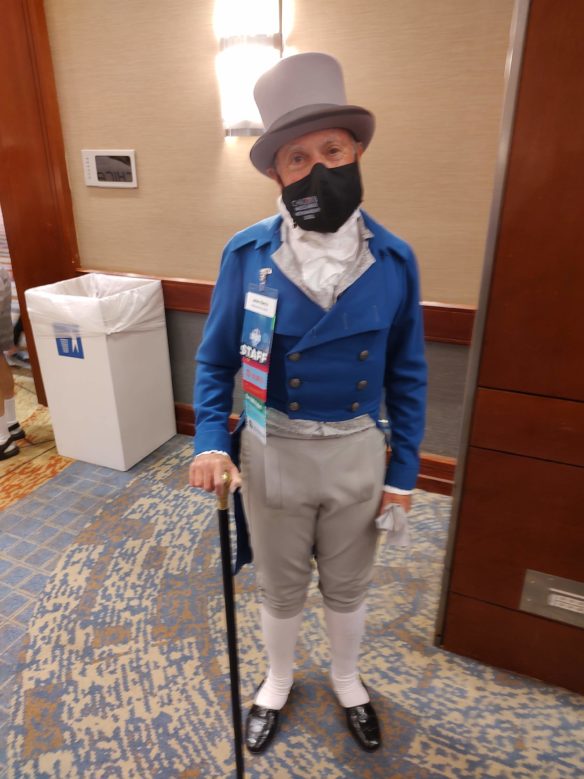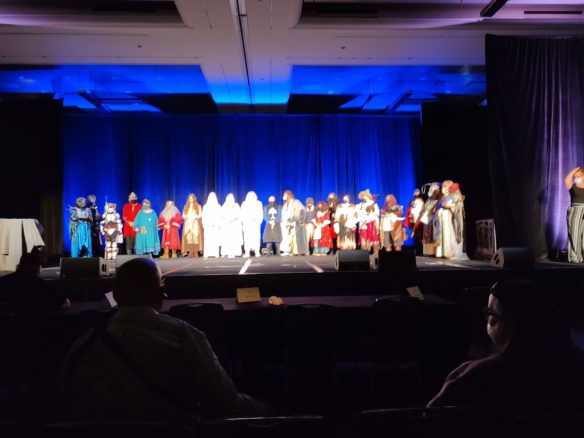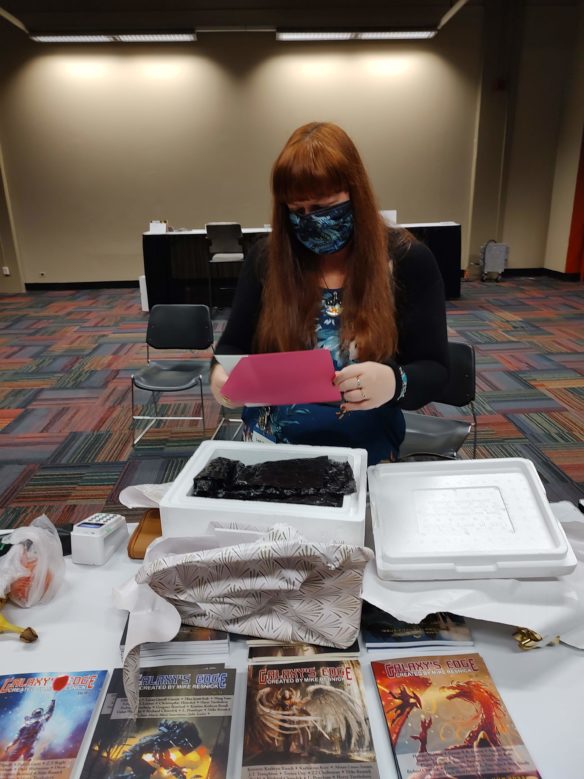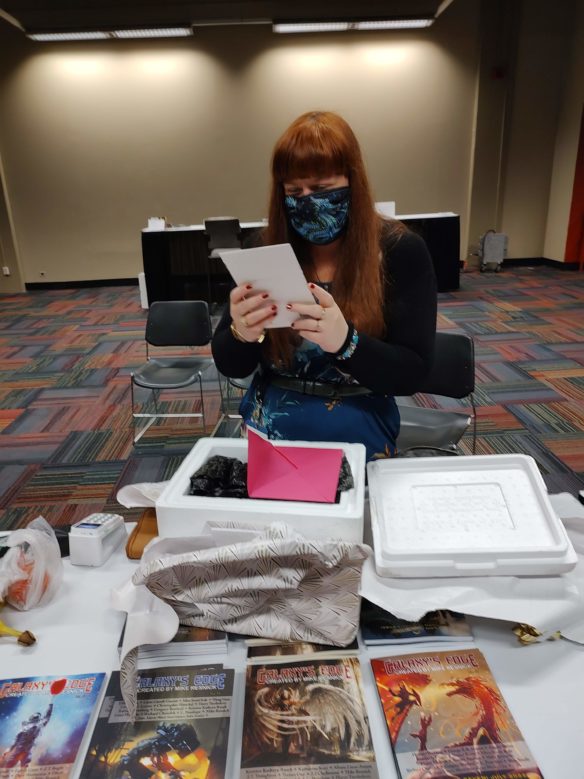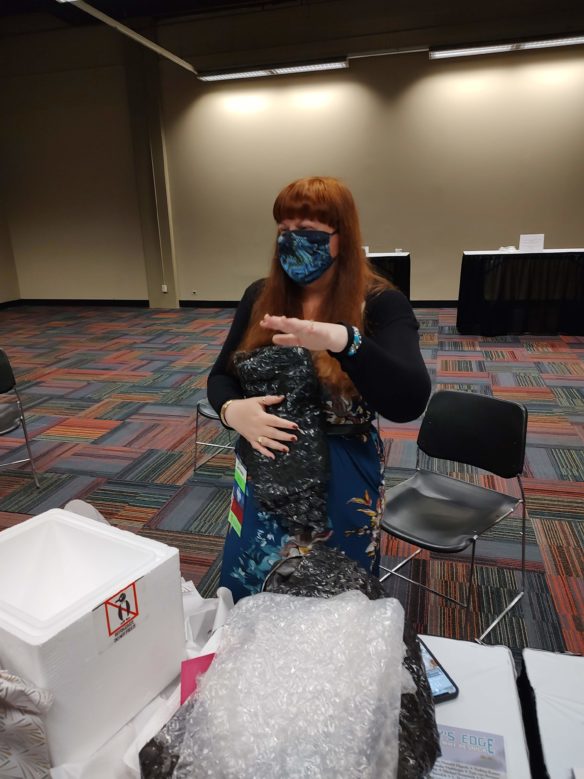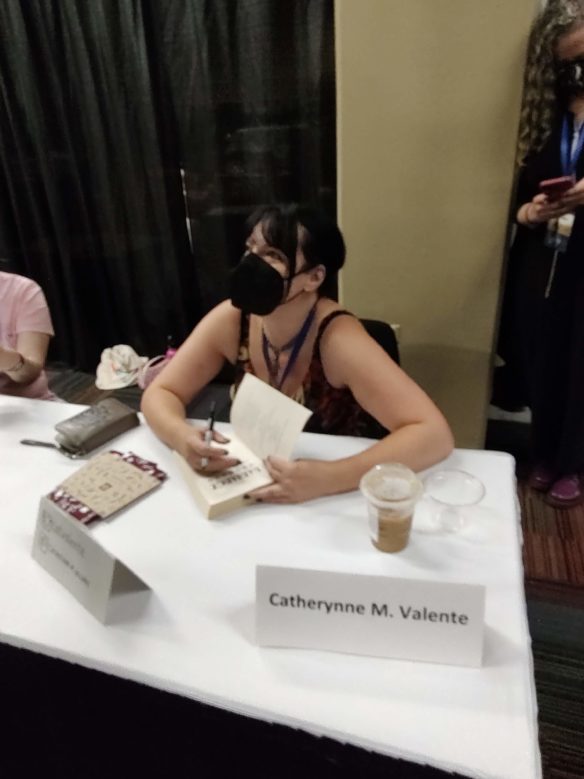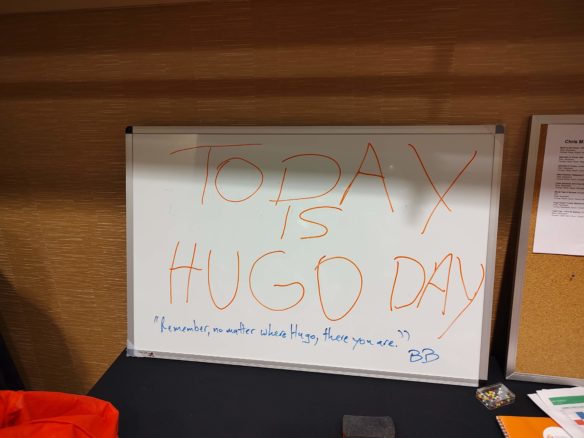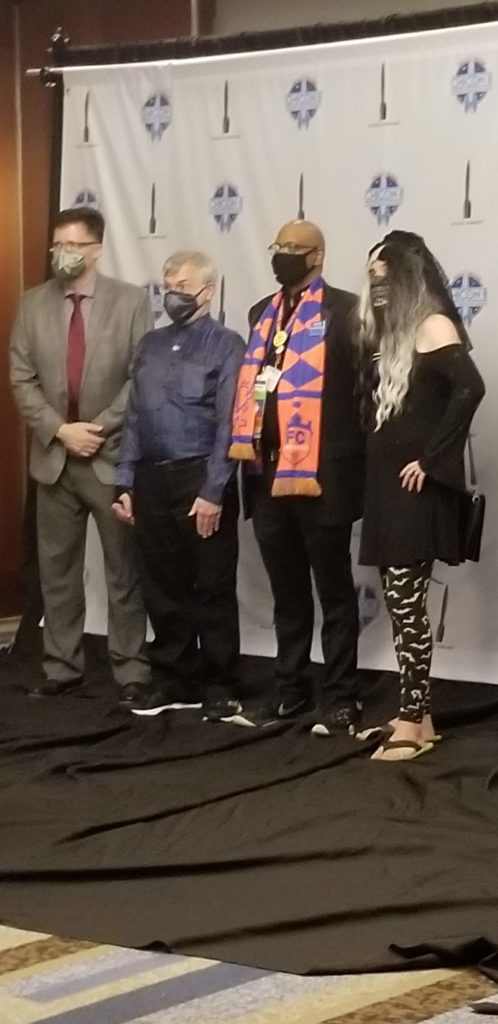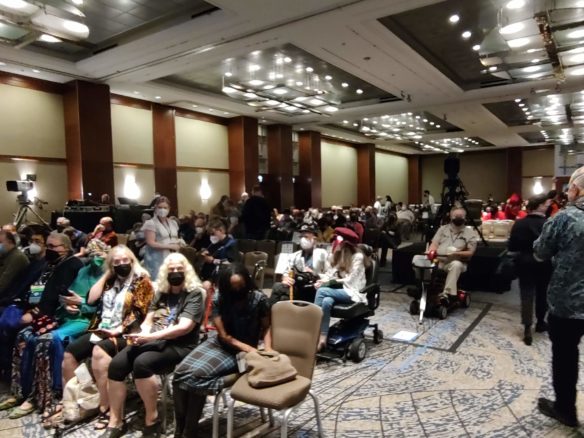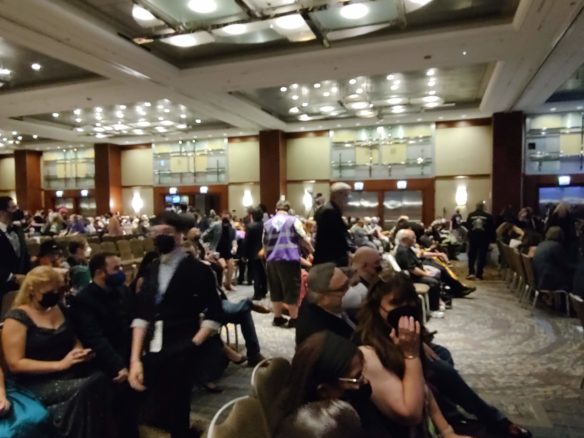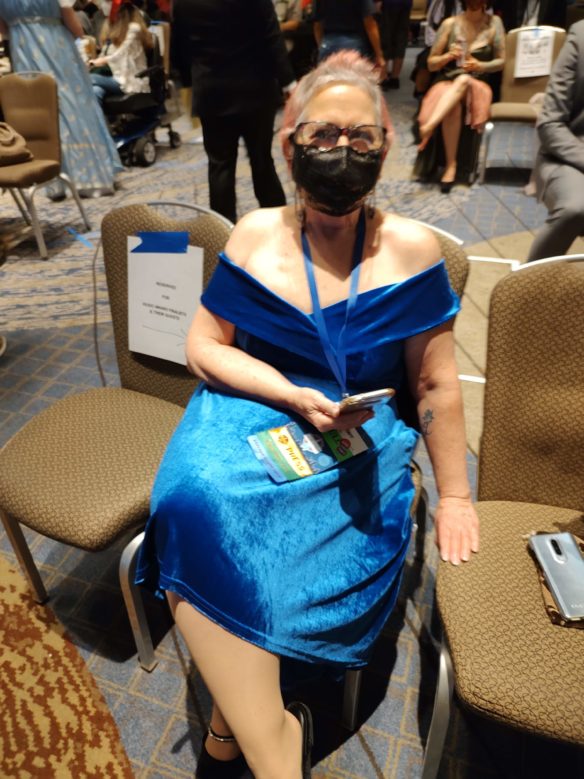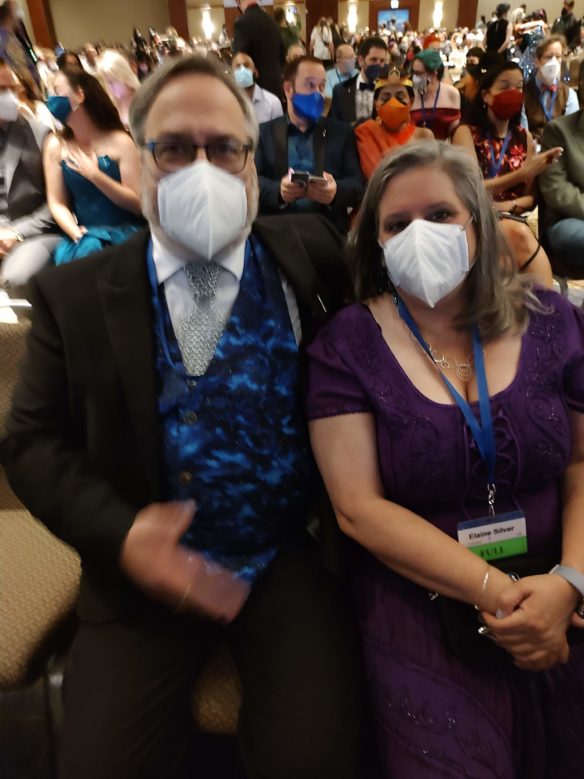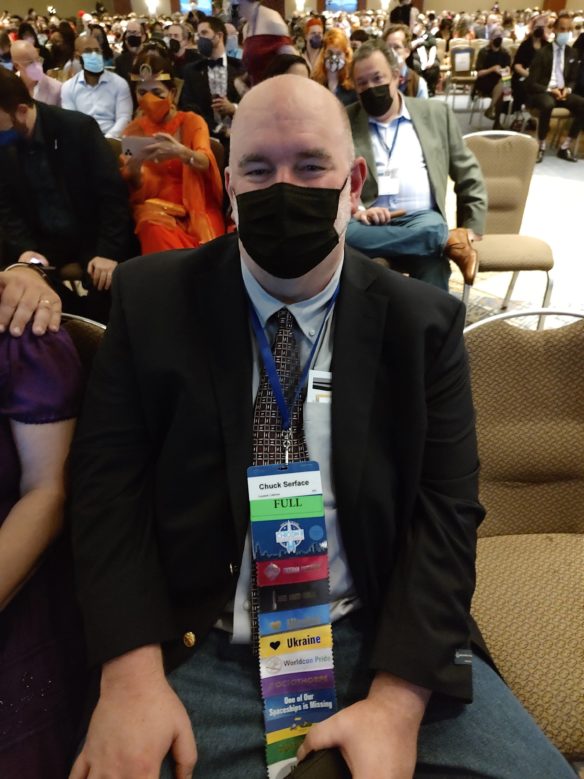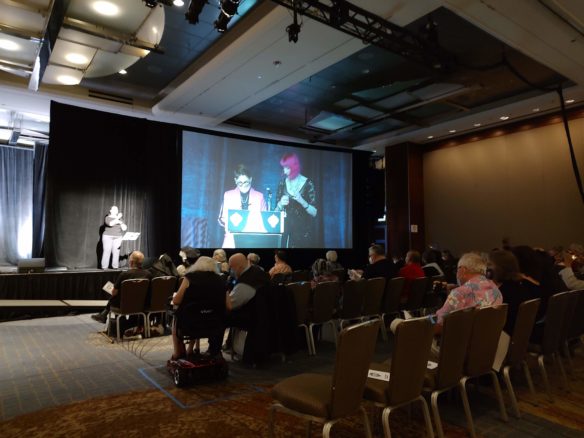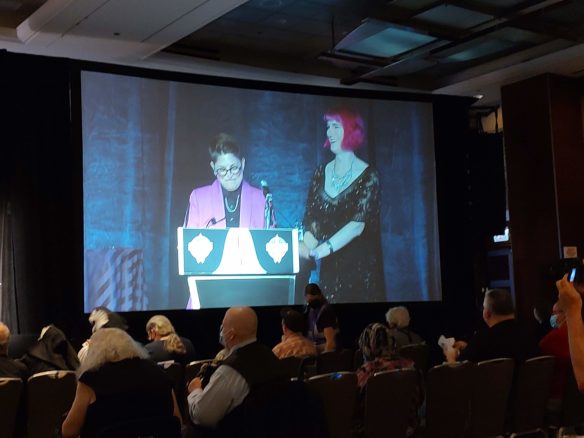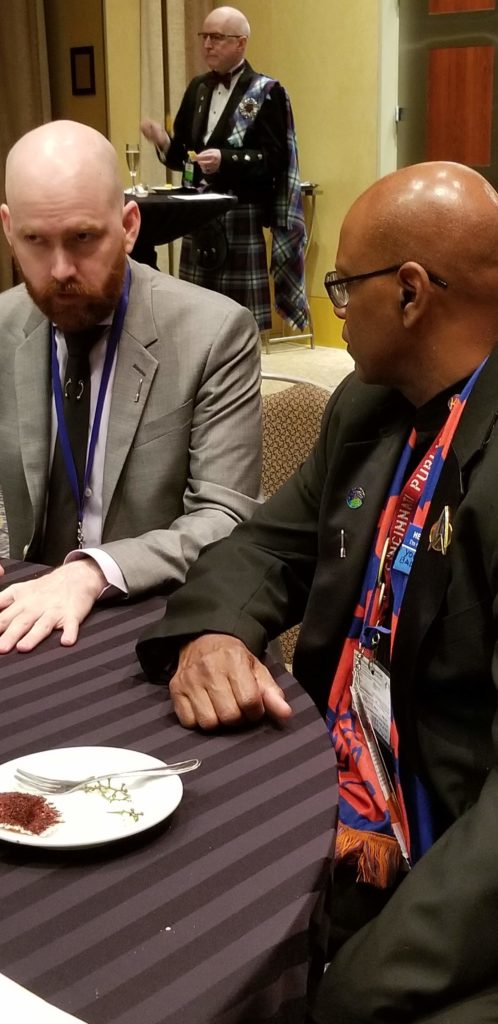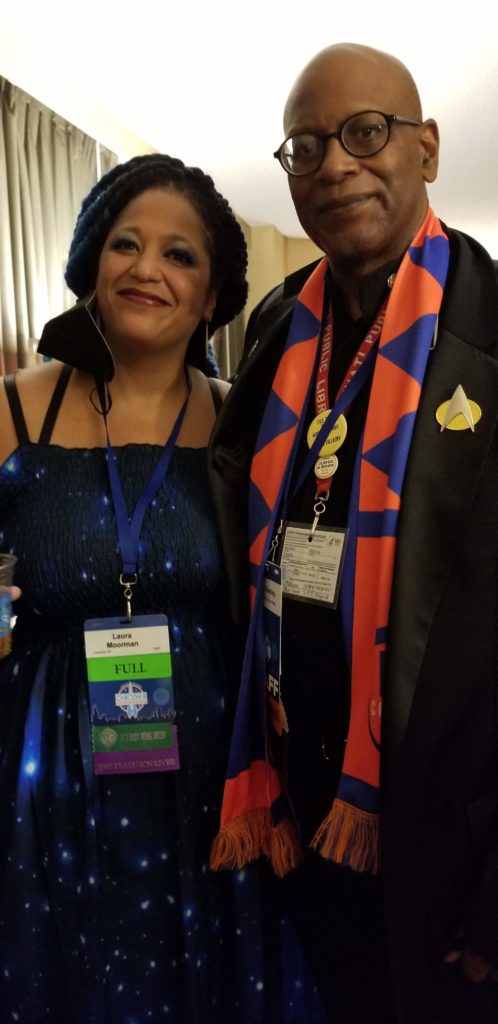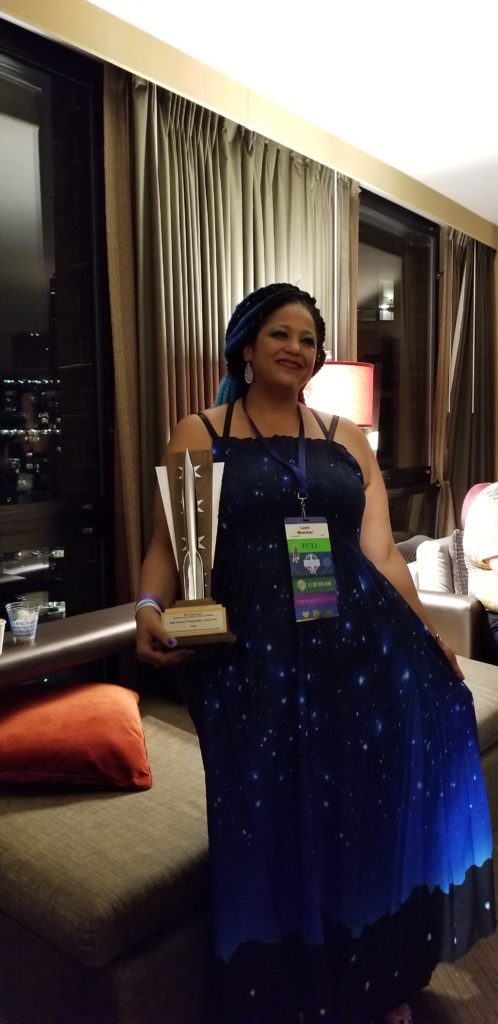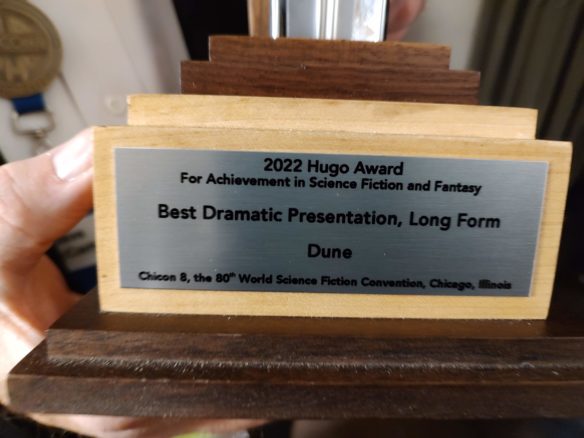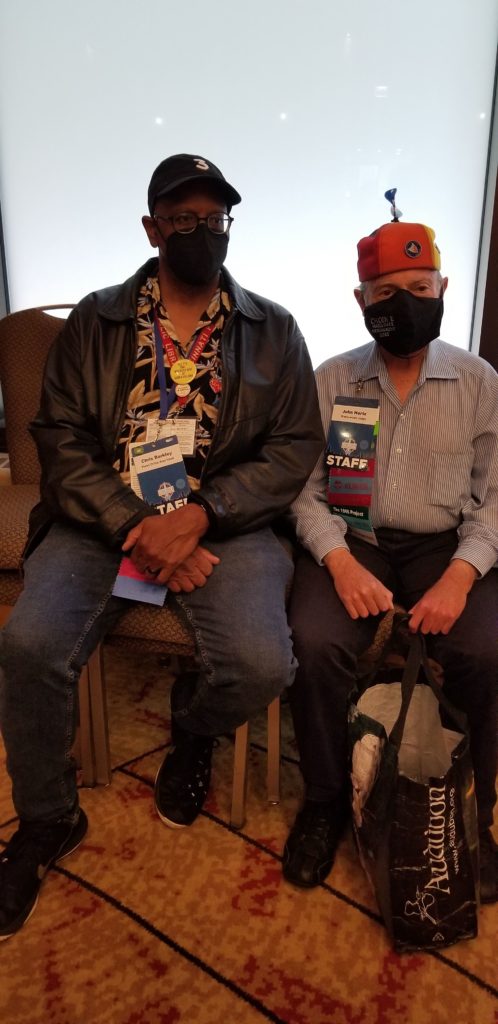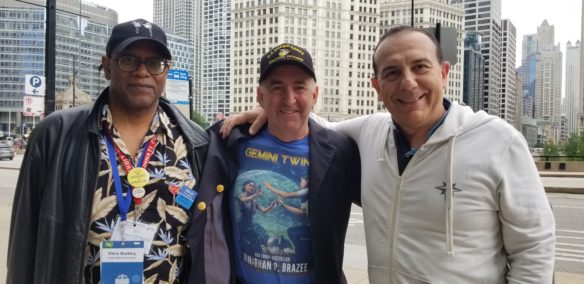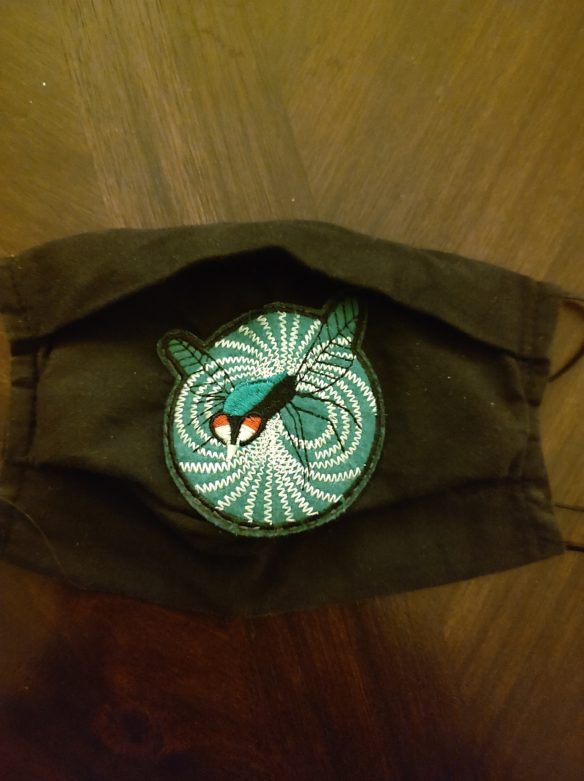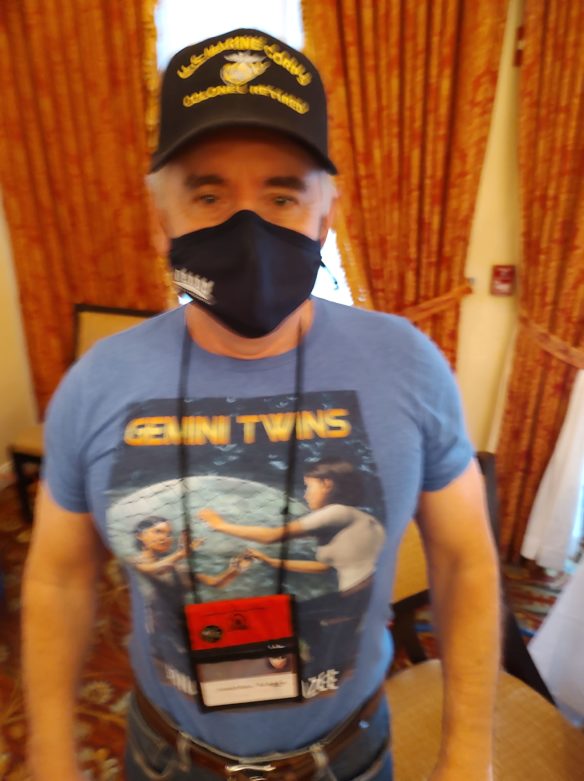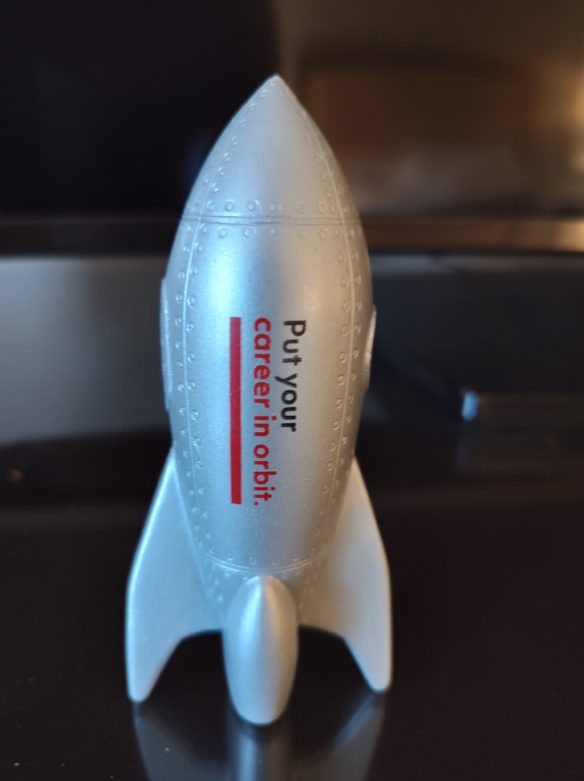(1) LE GUIN BOOK BUNDLE. Recently announced is the “Humble Book Bundle: A Wizard of Earthsea and More by Ursula K. Le Guin”.
You can get the three Earthsea novels for $1, go for an intermediate deal, or buy all 30 books in the bundle for a minimum of $18. The more you choose to pay, the more goes to a selected charity – Literary Arts, this time.
The titles in this bundle are available on Kobo.com. To access them, create or log in to your Kobo.com account. Please note that the content redemption deadline is December 15, 2027 at 11:00 AM PDT.
(2) CONGRATULATIONS! Heather Rose Jones aired Episode 300 of “The Lesbian Historic Motif Podcast” (Podbean) today. On her blog, Alpennia, she discusses “Where I Have Been, Where I Will Go” with the series.
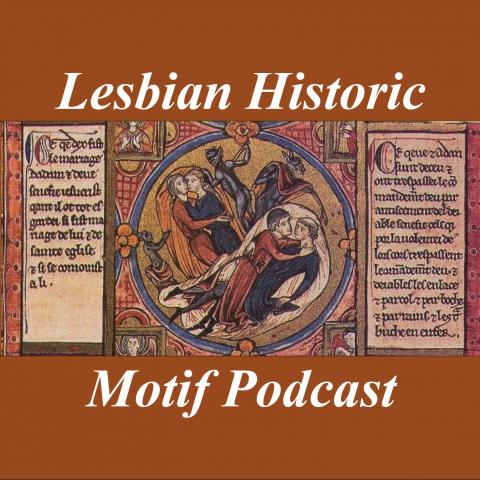
…When I first conceived of the Project back in the ‘80s, I wanted to create a sourcebook of historic research to help people create lesbian characters in historic settings. I figured it would be a manageable project because, after all, how much information could there be? (Pause while I glance sideways at my database with over a thousand publications listed.) I started the blog 10 years ago when I concluded that a more rational approach was to create an ongoing annotated bibliography. It would start getting the information out there. It would give me an incentive to start reading and processing all the publications I’d been collecting. And people could search the Project for topics relevant to their own interests. The blog has always had two parallel functions. For those who want a general, high-level understanding, the summaries themselves are available. But for those who want to do their own in-depth research, the Project offers guideposts, bibliographies, and sometimes links to the original publications it’s based on.
In the last year or so, I’ve come back around to the conclusion that my original idea was viable after all. Or, at least, that some version of that sourcebook was a viable idea. I have enough material—between the blog and the podcast—to put together something approaching my original vision: a one-stop sourcebook for people who want information on lesbian-like characters in history. A lot of the text is already written, albeit in a form that will need considerable editing. So the next big step for the Project will be to create that sourcebook.
Since making that decision, I’ve started focusing the podcast essays on creating chapters to fill in the outline I’ve drafted. Soon, I’ll be looking for input and feedback on what potential readers want to see in a resource of this type. But for now, I thought I’d celebrate this podcast milestone by laying out the current vision….
…One of the biggest philosophical issues in the study of queer history is the consideration of how modern gender and sexual identities relate to those in history—if they do at all. So the next section of the book will be exploring that concept and offering tools for thinking about how we can create characters who both reflect their own setting and also offer connection for modern readers. This will start off with my favorite metaphor: that gender and sexuality identities are like prepositions—every language is trying to describe the same physical reality, but speakers of different languages perceive and describe the relationships in that reality differently. It’s a really fun metaphor to explore, though probably no one else is quite as geeky about prepositional semantics as I am. The section will then review various historic models of gender and sexuality and talk about how they both reflected and shaped people’s understandings of their own lives….
(3) GET REJECTED QUICKER! So much for that “money flows to the writer” dictum.After Dinner Conversation will happily take $20 from any writer that wants a prompt decision about their story submission.
Here’s a bit more about how it works: “After Dinner Conversation – Short Story FAST PASS Submissions”.
What is a “Fast Pass” submission?
Because of the high volume of submissions, we tend to average 2-3 months to read and respond to a new submission. If you purchase a “Fast Pass,” you jump to the front of the line. Only after reading all of our “Fast Pass” submissions, will we go back to reading our regular submissions. (Or, if you are a yearly digital or print subscriber, your story is always moved to the front of the line!)
Accordingly, “Fast Pass” submissions should expect a response in 3-5 business days.
Are my chances of getting accepted better if I use the “Fast Pass” system?
Nope. You get the exact same reading and consideration as everyone else. You just get read first.
What do you do with the extra money?
We keep the lights on at After Dinner Conversation Publishing. Seriously, submitting via the “Fast Pass” is win/win. You get a faster response, and 100% of your money goes to supporting an independent literary publisher.
(4) THE MCCARTY FACTOR. In a new episode of the Wizards and Spaceships podcast, hosts David L. Clink and Rachel A. Rosen revisit “The Great 2023 Hugo Awards Controversy” with whistleblower Diane Lacey. Also discusses of Chris M. Barkley and Jason Sanford’s report.
In 2023, the Hugo Awards, administered by the World Science Fiction Society, were rocked by scandal. That year, the convention was hosted in Chengdu, China, and a number of popular and acclaimed works, from R. F. Kuang’s Babel to Xiran Jay Zhao’s Iron Widow, were deemed ineligible…even though they had enough nominations to appear on the ballot. The controversy engulfed the world of speculative fiction, but what really happened? In this episode, we talk to WorldCon whistleblower Diane Lacey to get her take on what went wrong, who’s to blame, and what we can learn from this moving forward.
(5) GUARDIAN JOINS THE RESISTANCE. …To a movie casting choice. This controversial column is from The Guardian’s “Week in Geek”: “Daisy Ridley’s Rey is now Star Wars’ best big-screen bet – is this a saga without a plan?”
…When the Fight Club author Chuck Palahniuk described modern consumer culture as “a copy of a copy of a copy”, he was probably thinking of Ikea churning out coffee tables with all the personality of an overcooked noodle, rather than the next episodes in a long-running space opera known for heroes who use quizzically reversed syntax. Nevertheless, he might easily have been talking about Star Wars, and the once great saga’s descent into self parody in the wake of reports from Hollywood that the future of the franchise on the big screen is to be based on … yep, you read it right … Daisy Ridley’s Rey.
It had already been announced that Rey, whose presence lent the sequel trilogy all the emotional resonance of a damp tea towel, will return for a movie set 15 years after the events of the execrable Rise of Skywalker, as she endeavours to build a new Jedi order. (Sharmeen Obaid-Chinoy is attached to direct.) That was worrying enough for those fans of the saga still reeling from the most recent episode’s attempts to tie up loose ends by lighting them on fire and hoping nobody noticed. But according to the Hollywood Reporter, Lucasfilm has decided that Rey is now seen as Star Wars’ “most valuable cinematic asset” – admittedly because “the closet is a little bare” following the deaths either on or off screen of pretty much the entire cast of the original trilogy….
(6) HOWARD BRAZEE (1951-2024). Colorado SF fan Howard Brazee died October 18 reports the Denver clubzine DASFAX. The family obituary is here. He is survived by his wife, Patricia, children Lisa and Ian, sisters Linda and Loralee, brother Jonathan (SF author and SFWA director), and grandchildren.
… Howard reveled in Colorado, but he reveled more being a family man, taking great pride and joy in watching Ian and Lisa mature and start their own families. He never lost the joy of childhood, which is why he was always the favorite of the family children. He took his duties as a grandfather, uncle, and grand-uncle to his enormous heart, giving love and support to everyone.
If there was one thing that set Howard apart was that he always had a smile on his face and a ready joke or quip. He raised the spirits of all those around him.
A lifelong science fiction and fantasy fan, he was known to many of the most famous writers in the genres. He and Pat were fixtures at MileHiCon, the largest science fiction conference in the Rocky Mountain region.
Howard was a good man, in every sense of the word, and the world is a better place for his life journey on it….
DASFAx editor Sourdough Jackson adds, “Something Jonathan Brazee once told me is that when he was a small boy, his big brother Howard introduced him to science fiction, in part by reading stories to him.”
(7) TODAY’S BIRTHDAY.
[Written by Paul Weimer.]
November 16, 1952 — Robin McKinley, 72.
By Paul Weimer: I almost missed out on reading Robin McKinley, in my focus to read “Adult novels”. I don’t remember how, in the mid 80’s I came across The Hero and the Crown, but I did, and I was enchanted with Aerin’s story, rising from distrusted daughter of the king, to dragon-slaying hero facing enormous odds with courage, and intelligence. I did read the books in the wrong order, since I read The Blue Sword, next, which The Hero and the Crown is a prequel to, and Aerin appears as a force ghost in, briefly. That confused me, it may have been one of the first times I accidentally read a series out of publication order, but within chronological order. I didn’t know you could do such a thing.
I kind of lost track of McKinley’s work for a good long time. Too many authors to read, too much thinking that I didn’t really feel the need for more YA (even if her later work was not all YA at all), until I came across one of the best vampire novels out there, from McKinley, Sunshine, which is set in an alternate world where the creatures of the night fought humanity and now have a prickly conflicting relationship, with vampire gangs, pools of black magic and a lot more.
The worldbuilding of “Sunshine” Rae’s world is fascinating, taking the old tropes of vampires and undead and putting them into a secondary world to be able to play with those tropes and settings and ideas as she likes. Sunshine, like other McKinley novels, really run strongly on characters and character relationships, especially ones under very heavy fire, both from plot and from others around them. I can see a line from Aerin all the way to Rae, and beyond, in McKinley’s work.

(8) COMICS SECTION.
- Free Range shows SJW credentials have gained battlefield mobility.
- Zack Hill says always to call it research.
- Bliss notes the new signs of the times.
- Tom Gauld’s TBR pile turns threatening.
(9) GREEN LANTERN STATUE. Burbank has dedicated a third superhero statue: “DC, Visit Burbank, and Warner Bros. Discovery Unveil Green Lantern Statue”.
An iconic member of DC’s Green Lantern Corps stands as a symbol of willpower and keeper of law and order for visitors and residents of Burbank as a seven-and-a-half-foot-tall bronze statue of Green Lantern John Stewart was unveiled today in a special ceremony at Empire Center’s Hangar 28 in Burbank. The statue is the newest product of a partnership between Visit Burbank, DC, and Warner Bros. Discovery, joining celebrated DC Super Heroes Batman, in downtown Burbank, and Wonder Woman, at the entrance to the Warner Bros. Studio Tour.
… The newly installed Green Lantern statue can be viewed 24 hours a day at Empire Center’s Hangar 28 at 1775 N Victory Place, Burbank, CA.
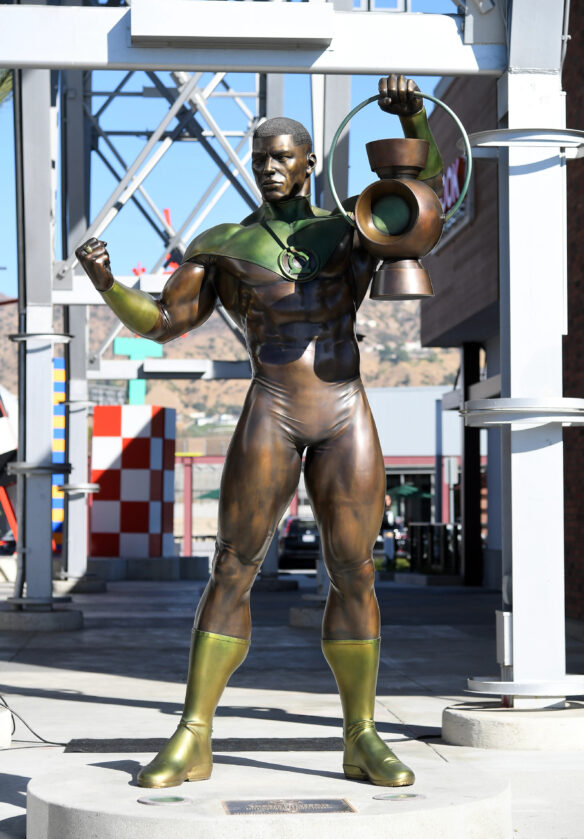
(10) WHY DID EARTH’S FIRST RADIO MESSAGE TO ALIEN CIVILIZATIONS LEAVE OUT HALF OF HUMANITY? [Item by SF Concatenation’s Jonathan Cowie.] Back on Friday November 16, 1974 (around teatime in Britain) a message was sent to the Great Globular Cluster in the constellation of Hercules (26,000 light years away) from the Arecibo Observatory in Puerto Rico, then the largest single-dish radio telescope in the world. It consisted of a series of binary digits, 0s and 1s, which represented numbers and pictures conveying basic information about humanity. One of the pictures was of a crude depiction of a human. Though blocky, it looked far more like a man than a woman. Radio astronomer Frank Drake (he of the famous Drake Equation, then the director of the observatory, was tasked with commemorating what was essentially a new instrument with something of a media stunt.
This week’s Nature has an article on this message. Though the Arecibo message contained an image likely of a man (not a woman), what might seem a sexist choice arguably deserves a more subtle interpretation the article opines:
As the electronic signals from our planet expand ever outwards into space, the world is marking 50 years since humanity broadcast its first radio message intended to get a response from the stars. No reply has been received, and none is expected for millennia, at least. But the form of this message, and others, raises questions about how humans see and portray ourselves — and about the legacies, scientific and otherwise, that any civilization leaves for others…
….Drake wrestled with how to represent a human figure using so few pixels. He hoped to make it unisex, but that version “came out looking more like a gorilla than a human. So, I left it masculine rather than apelike.”Thus, a picture of only half of humanity was broadcast from the Arecibo telescope. In hindsight, Drake admitted that he might have subconsciously tried to make it look a lot like himself — “as though I were beaming myself up Star Trek style”…
….The Arecibo message demonstrates how the demographics of the scientists involved in the search for extraterrestrial intelligence (SETI) affected the character of the messages they sent. As with art, these messages are shaped by our biases, values and identities — mirrors that reflect our histories and cultures. If fields such as astronomy are dominated by a narrow demographic, as they were in the 1970s, then that will be reflected in the design and content of the messages, which might emphasise certain human experiences and perspectives over others…
(11) TODAY’S THING TO WORRY ABOUT. “Did NASA’s Viking landers accidentally kill life on Mars? Why one scientist thinks so” reports Space.com.
In 1975, NASA’s Viking 1 spacecraft entered orbit around Mars, carrying a mission to unlock the secrets of the Red Planet. Soon, it released twin landers that drifted toward the Martian surface and eventually made history as the first American spacecraft to touch down on the world.
For over six years, Viking 1 continued to orbit Mars’ Chryse Planitia region while its landers collected soil samples using robotic arms and onboard laboratories, marking a groundbreaking chapter in humanity’s exploration of the Martian environment.At the time, however, little was known about environmental conditions of the Red Planet, and the Viking life detection experiments were modeled after culturing techniques commonly used to identify microbes on Earth. These methods involved adding water and nutrients to those aforementioned soil samples, then monitoring for any signs that suggest microbes might be living in the samples. Such signals were associated with responses to the additives — essentially an influx of components needed to complete normal life cycles as we know them — and included things like growth, reproduction and the consumption of food for energy.
One day, both Viking landers reported a potential positive detection of microbial activity in their soil samples, and the findings naturally sparked decades of intense debate. Had we finally found proof of life elsewhere in the universe? However, most scientists now believe the results were negative or — at best — inconclusive. They think it’s more likely that the positive readings have an alternative explanation.
But that’s most scientists.
According to Dirk Schulze-Makuch, an astrobiologist at the Technische Universität Berlin in Germany, there may be another facet to this mystery that hasn’t yet been considered: Viking may indeed have discovered life on Mars, but the water-based nature of its life-detection experiments might have unintentionally killed it.
In a recent commentary published in the journal Nature Astronomy, titled “We may be looking for Martian life in the wrong place,” he argues that because Mars is even drier than one of the most arid places on Earth, the Atacama Desert, where microbes obtain water through salts that draw moisture from the atmosphere, any analogous Martian life would be highly sensitive to the addition of liquid water. Even one drop too much could threaten their existence….
(12) IN THE QUEUE. [Item by Mike Kennedy.] Line Culture has been the subject of much discussion from time to time in sf/f/etc. fandom. This article takes a broader look at Line Culture and how it has been affected by the Internet/social media “TikTok trends have created massive IRL lines. Don’t fall for the hype” at Mashable.
… Now, let’s talk more tacos. My neighborhood spot, Taqueria Ramirez, blew up last year. It cracked the New York Times‘ Top 100 restaurants and, in turn, became a destination folks would post about online. Last year, there were so many posts about the spot, and, in turn, the lines were godawful. It’d take 45 minutes of queueing up to get a few (albeit delicious) tacos. As a result, I almost never went to the amazing spot I pass every day.
But then a magical thing happened. Ramirez fell off the Times’ Top 100 list. The tacos are no less delicious. They remain the best tacos I’ve ever eaten. But the lines have shrunken by at least 50 percent. What once stretched around the block is like a dozen people long. What changed? You can no longer make a social media post bragging, “I tried the New York Times‘ only taqueria in its list of Top 100 restaurants.” That’s it….
(13) ASTRONAUT COOGAN Q&A. [Item by Steven French.] “Space travel should not be just ‘for the elites’, says new British astronaut” in the Guardian.
She beat a field of more than 22,000 candidates and has a PhD in astrophysics and a background as a Royal Navy reserve, but the newly qualified British astronaut Rosemary Coogan believes that in future space travel should not be restricted to elites.
Coogan, 33, from Belfast, who is the European Space Agency’s (Esa) second British recruit, believes we are entering a revolutionary period of space exploration that will lead not only to the return of humans to the moon but also journeys to Mars and beyond.
“I certainly don’t think space travel, or space generally, should be for the elites,” she said. “I’m sure there are plenty of people out there who would love to [visit] another planet. I think the people who will end up doing these missions will be trained to make sure that it’s a successful mission and that we’re treating other planets with respect, but that’s not the same as saying they’ll be the few elites.”
(14) REPORTING WEIGHTLESSNESS. [Item by Steven French.] And here’s an accompanying piece by a Guardian journalist who accompanied Rosemary Coogan, Britain’s first female ESA astronaut on a zero-gravity flight: “’First instinct is to swim’: my trip on a zero-gravity flight with an ESA astronaut”.
It feels as if I’m hallucinating: as I lie on the floor, the ceiling suddenly sinks towards me and the walls begin to tilt at an impossible angle. It is my first experience of zero gravity on an European Space Agency (Esa) parabolic flight. In theory I know what is going on, but my brain just cannot grasp that it is actually me that is floating, that I’m suspended midair….
[Thanks to Cat Eldridge, SF Concatenation’s Jonathan Cowie, Steven French, P. J. Evans, Rob Thornton, Sourdough Jackson, Kathy Sullivan, Teddy Harvia, Mike Kennedy, Andrew Porter, John King Tarpinian, and Chris Barkley for some of these stories. Title credit belongs to File 770 contributing editor of the day Jack Lint.]

